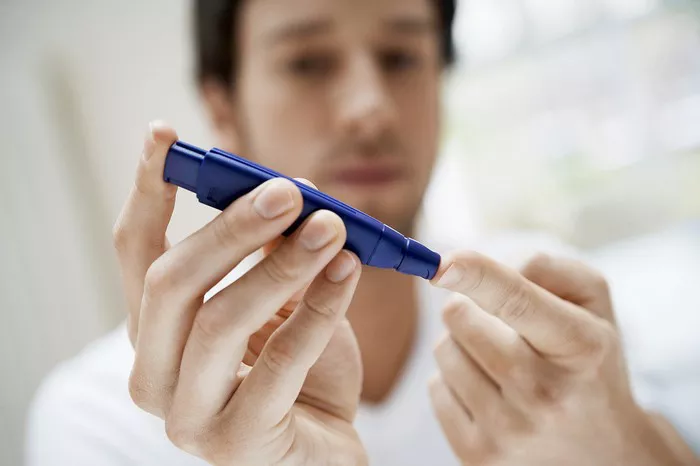Blood sugar levels after breakfast are a crucial aspect of overall health, especially for those with diabetes or at risk of developing the condition. Breakfast is often considered the most important meal of the day, and the foods we consume during this meal can have a significant impact on our blood glucose levels. Understanding what constitutes a normal blood sugar range after breakfast, the factors that influence it, and how to manage it effectively is essential for maintaining stable energy levels, preventing diabetes-related complications, and promoting general well-being. In this article, we will explore the details of post-breakfast blood sugar levels, including the ideal range, the role of different foods, lifestyle factors, and strategies for maintaining optimal levels.
Understanding Blood Sugar and Its Regulation
What Is Blood Sugar?
Blood sugar, or blood glucose, is the primary source of energy for the body’s cells. It is derived from the digestion of carbohydrates in the diet and is transported through the bloodstream to reach various tissues and organs. Glucose is essential for normal brain function, muscle activity, and the overall metabolism of the body. The body has a complex and finely tuned system to maintain blood sugar levels within a relatively narrow range, ensuring a continuous supply of energy to meet the body’s demands.
How the Body Regulates Blood Sugar
The body’s regulation of blood sugar involves the coordinated action of several hormones and organs. The pancreas plays a central role in this process. When blood sugar levels rise after a meal, the pancreas secretes insulin, a hormone that promotes the uptake of glucose by cells, particularly in the liver, muscle, and adipose tissue. This action helps to lower blood sugar levels and store excess glucose for future use. In contrast, when blood sugar levels start to decline, the pancreas releases glucagon, which signals the liver to break down stored glycogen into glucose and release it into the bloodstream, thereby increasing blood sugar levels. Additionally, other hormones such as adrenaline, cortisol, and growth hormone can also influence blood sugar levels, especially during times of stress or physical activity.
Normal Blood Sugar Range After Breakfast
General Guidelines
For individuals without diabetes, a normal blood sugar level one to two hours after breakfast is typically less than 140 mg/dL. This range indicates that the body is effectively processing the carbohydrates consumed during the meal and maintaining a stable blood glucose level. However, it’s important to note that some variation can occur depending on factors such as the composition of the breakfast, individual metabolism, and recent physical activity. For example, a person who has eaten a meal high in fiber and protein may have a more gradual rise in blood sugar and a lower peak level compared to someone who has consumed a large amount of refined carbohydrates.
Variations in Normal Range
Even within the normal range, there can be some individual differences. Some people may naturally have slightly lower or higher post-breakfast blood sugar levels that are still considered healthy for them. For instance, a person with a very active lifestyle and high muscle mass may have a blood sugar level closer to 120 mg/dL after breakfast, as their muscles are more efficient at taking up glucose. On the other hand, a person with a slower metabolism may have a level closer to 135 mg/dL and still be within the normal range. Additionally, age can also play a role, with older adults sometimes having slightly higher post-breakfast blood sugar levels due to age-related changes in insulin sensitivity.
Factors Affecting Post-Breakfast Blood Sugar Levels
The Type of Breakfast Consumed
The composition of the breakfast meal has a significant impact on blood sugar levels. Foods high in refined carbohydrates, such as white bread, sugary cereals, and pastries, are quickly digested and absorbed, leading to a rapid increase in blood sugar. For example, a breakfast of a glazed doughnut and a cup of orange juice can cause a sharp spike in blood glucose levels within 30 minutes to an hour. In contrast, a meal rich in whole grains, fiber, and protein, like a bowl of oatmeal with nuts and berries, is digested more slowly, resulting in a more gradual and stable rise in blood sugar. The fiber in whole grains and vegetables slows down the absorption of carbohydrates, while the protein helps to further stabilize blood glucose levels.
Physical Activity
Engaging in physical activity after breakfast can have a beneficial effect on blood sugar levels. Exercise helps the body use glucose more effectively, increasing insulin sensitivity. Even a short walk or some light stretching after a meal can help lower the postprandial (after-meal) blood sugar spike.
Strategies to Manage Post-Breakfast Blood Sugar Levels
Choosing the Right Foods
Opting for a balanced breakfast is key to managing blood sugar levels. Incorporating whole grains, such as whole wheat bread, brown rice, or quinoa, provides a slow-release source of carbohydrates. Adding lean proteins like eggs, Greek yogurt, or low-fat cottage cheese helps to further stabilize blood sugar. Including fiber-rich foods such as fruits, vegetables, and nuts also slows down the digestion and absorption of carbohydrates. For example, a breakfast of a whole grain English muffin with almond butter and sliced banana is a healthy choice that can help maintain stable blood sugar levels.
Portion Control
Controlling portion sizes is equally important. Even healthy foods can cause a spike in blood sugar if consumed in excessive amounts. Using measuring cups or a food scale can help ensure that the right amount of each food is eaten. For instance, a recommended serving of oatmeal is about half a cup of dry oats, and a serving of fruit is typically one medium-sized piece. By being mindful of portion sizes, individuals can better manage their carbohydrate intake and prevent excessive blood sugar rises.
Regular Monitoring
Regularly monitoring blood sugar levels after breakfast can provide valuable information for making adjustments to diet, exercise, and medication regimens. Using a glucometer or a continuous glucose monitoring (CGM) system, individuals can track their blood sugar levels and identify patterns. If a person notices that their blood sugar is consistently high after a particular breakfast, they can make changes to the meal composition or seek advice from a healthcare provider. Monitoring also helps to ensure that any changes made are having the desired effect on blood sugar control.
Conclusion
Summary of Key Points
In conclusion, a normal blood sugar level after breakfast for those without diabetes is generally less than 140 mg/dL, although some individual variation exists. The type of breakfast consumed, physical activity, and medications or medical conditions all influence post-breakfast blood sugar levels. High levels can have both short-term and long-term negative impacts, while strategies such as choosing the right foods, controlling portions, and regular monitoring can help manage blood sugar effectively.
Future Perspectives and Research
As research in diabetes and nutrition continues to advance, our understanding of post-breakfast blood sugar management is likely to improve. Future studies may focus on more personalized approaches to diet and lifestyle modifications based on an individual’s genetic makeup, gut microbiome, and other factors. Additionally, new medications and technologies for blood sugar monitoring and control may be developed, further enhancing our ability to maintain optimal blood sugar levels after breakfast and throughout the day.In summary, being aware of what your blood sugar should be after breakfast and taking steps to manage it is an important part of maintaining good health and preventing diabetes and its complications.
Related topics


























